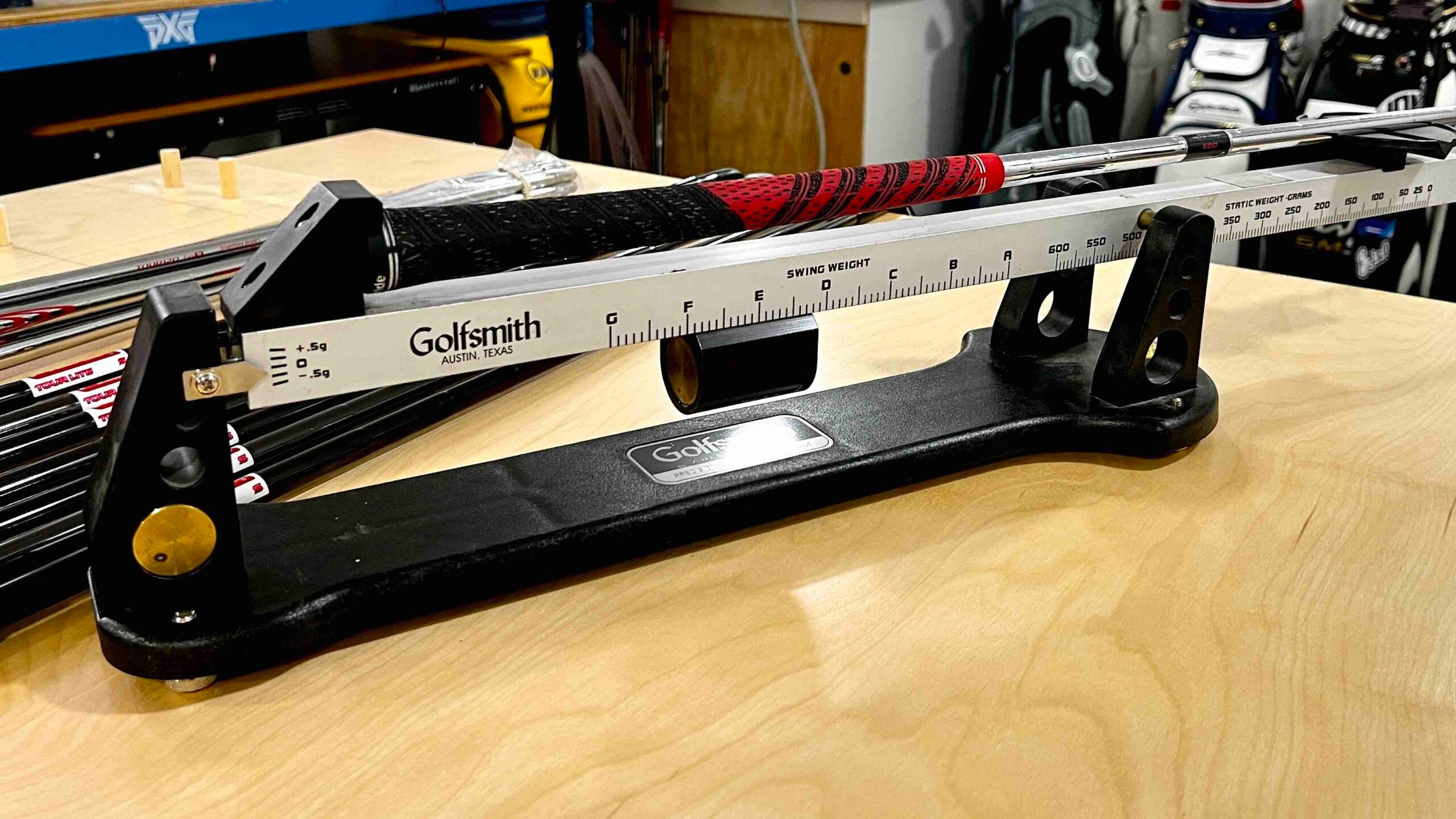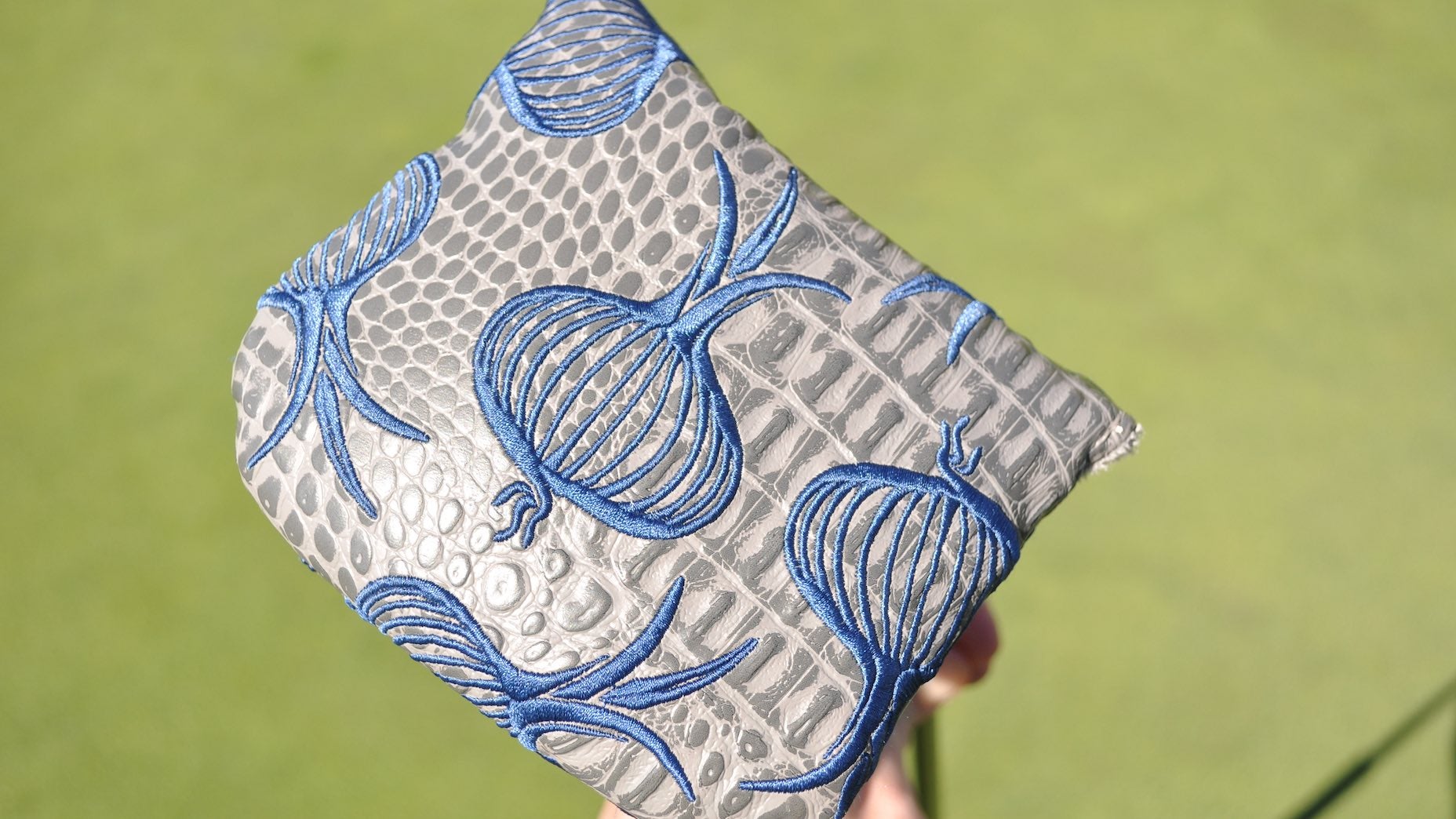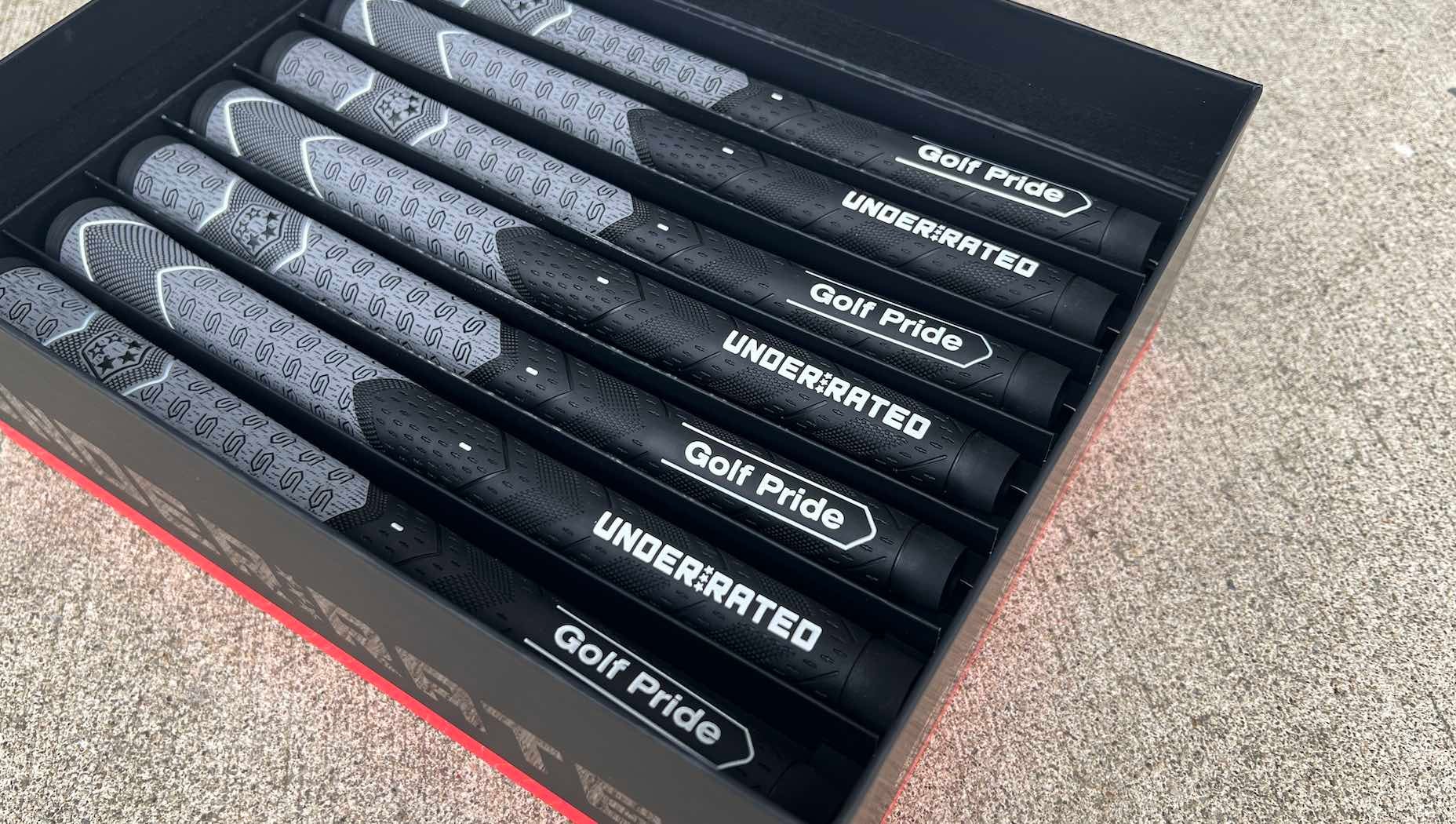Welcome to The Build Shop, a new GOLF.com video series produced in partnership with Golf Pride. This week with the help of equipment editor and experienced club builder Ryan Barath, we take you inside the finer details of your golf clubs.
Without a doubt, golf club swing weight is one of the most used but also misunderstood elements of golf club performance. But whether you understand swing weight or not, every golf club has a designated value, and every golfer can perceive that weight in some way or another.
What is swing weight?
A golf club’s swing weight refers to the measurement of its balance point based on a scale using a 14″ fulcrum. A swing weight scale is a device specifically designed for the purpose of matching golf clubs for a feel and dates back to when golf clubs still used wooden shafts.

Every component of a golf club from the grip to the head plays an important role in a golf club’s final swing weight value, and the scale ranges from A to G, with intermittent values between letters from 0 to 9, ie: D1, D2, D3, and so on. A is the lightest end of the scale while G is the heaviest. Although rare, there are some specific clubs like long putters that are so big and heavy or short junior clubs that are outside the range of a traditional swing scale, but in almost every case any club you will find off the rack will be within the A to F range.
As for performance, a golf club with a heavier swing weight can offer better tempo control for stronger players with faster transitions, while clubs with a lighter swing weight are generally easier to swing and can help golfers with moderate clubhead speeds gain distance.
How to change swing weight
Anytime a component of a golf club is adjusted the swing will change with it. As an example, if a club is made shorter the swing weight will become lighter. If weight is added to the head, the swing weight will become heavier. Like with any balanced scale, even a small mass change will affect swing weight, down to a single gram, which is why precision is required when building an entire set of matching clubs.
One of the ways golfers inadvertently change swing weight is when they change their grips, whether it be by going to a larger heavier grip, or a smaller lighter one. Even if a golfer is regripping with the same grip as before, the amount of adhesive tape used under the grip to hold it in place can be enough to make the golf club feel different to the player.
There is no one size fits all for any player, but at least understanding what swing weight is and how it can be adjusted to feel right to you can make a huge difference to how a golf club feels in your hands and help you make more confident swings on the course.
Want to overhaul your bag for 2023? Find an industry-leading fitting location near you at True Spec Golf, and for more on the latest gear news and information, check out our latest Fully Equipped podcast below.










